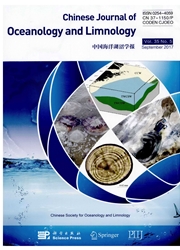

 中文摘要:
中文摘要:
消化酶活动和胰岛素的 mRNA 水平在 Cherax quadricarinatus 的胚胎的发展期间被分析用生物化学并且 Fluorogenic 量的 PCR (FQ-PCR ) 方法。结果证明胰岛素和糜蛋白酶的活动有二个不同变化模式。胰岛素特定的活动在开发的早阶段很快增加了并且为开口阶段作准备,仍然保持高。然而,糜蛋白酶活动在舞台 4 胚胎的开发达到顶点并且在最后阶段显著地减少了。胰岛素的 mRNA 水平在所有阶段被提高,二山峰价值在阶段被观察 2 和 5 分别地。结果显示胰岛素在胚胎的开发期间并且为为幼虫的饮食的蛋白质的吸收为蛋黄的利用是很重要的。胰岛素的基因可能在 transcriptional 水平被调整。胰岛素的 mRNA 层次能为胰岛素基因的表示反映不仅胰岛素活动,而且规章的机制到某个度。
 英文摘要:
英文摘要:
Abstract The digestive enzyme activity and mRNA level of trypsin during the embryonic development of Cherax quadricarinatus were analyzed using biochemical and Fluorogenic Quantitative PCR (FQ-PCR) methods. The results show that the activities of trypsin and chymotrypsin had two different change patterns. Trypsin specific activity increased rapidly in the early stages of development and still remained high in preparation for the hatch stage. However, chymotrypsin activity peaked in stage 4 of embryonic development and decreased significantly in the last stage. The mRNA level of trypsin was elevated in all stages and two peak values were observed in stages 2 and 5 respectively. The results indicate that trypsin is very important for the utilization of the yolk during embryonic development and for the assimilation of dietary protein for larvae. The gene of trypsin is probably regulated at transcriptional level. The mRNA levels of trypsin can reflect not only trypsin activity, but also the regulatory mechanism for expression of trypsin gene to a certain degree.
 同期刊论文项目
同期刊论文项目
 同项目期刊论文
同项目期刊论文
 Biochemical composition and digestive enzyme activities during the embryonic development of the redc
Biochemical composition and digestive enzyme activities during the embryonic development of the redc Digestive enzyme activity and mRNA level of trypsin in embryonic redclaw crayfish, Cherax quadricarn
Digestive enzyme activity and mRNA level of trypsin in embryonic redclaw crayfish, Cherax quadricarn 期刊信息
期刊信息
